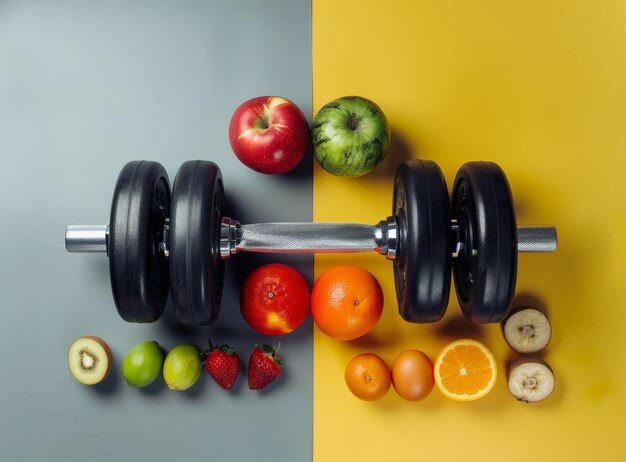A weight loss exercise plan is a structured approach to help burn calories, reduce fat, and build lean muscle, all of which contribute to sustainable weight loss. While nutrition sets the foundation for reducing body fat, exercise accelerates progress by increasing energy expenditure and improving body composition.
The most effective weight loss exercise plan combines cardio workouts like brisk walking, cycling, or swimming with strength training exercises. Cardio helps burn immediate calories, while strength training builds muscle, which boosts your resting metabolic rate. High-Intensity Interval Training (HIIT) is also a powerful option for those short on time, as it burns more calories in less time and improves cardiovascular health.
It’s important to start slow and choose activities you enjoy to maintain consistency. A well-balanced weight loss exercise plan should include 3–5 sessions per week, focus on full-body movement, and gradually increase in intensity to keep challenging your body and avoiding plateaus.
In this comprehensive article, we will walk you through everything you need to know about building an effective weight loss exercise plan, along with the top 8 expert-approved tips to help you reach your goals faster, safer, and smarter.

Why Exercise is Essential for Weight Loss
✅ 1. Calories In vs. Calories Out: At the core of every effective weight loss exercise plan is the principle of burning more calories than you consume. Physical activity increases your overall energy expenditure, helping create the calorie deficit necessary for fat loss.
✅ 2. Muscle vs. Fat: A good weight loss exercise plan helps preserve and build lean muscle while you shed fat. Since muscle burns more calories than fat—even at rest—maintaining muscle mass improves your metabolism and accelerates long-term weight loss.
✅ 3. Hormonal Balance: Regular exercise supports hormonal health. It regulates insulin (blood sugar control), lowers cortisol (stress hormone), and reduces the tendency for fat to accumulate around your belly—making your weight loss exercise plan more effective.
✅ 4. Mental Health Benefits: Exercise boosts feel-good endorphins, lowers anxiety and depression, and enhances sleep quality. A strong mental state supports your weight loss exercise plan by reducing emotional eating and improving adherence to healthy habits.
Top Weight Loss Exercise Plan Tips
Let’s break down the top 8 proven tips that will supercharge your weight loss exercise plan.
Start with Cardio to Burn Calories
Starting your weight loss exercise plan with cardio is one of the most effective ways to burn calories and jumpstart fat loss. Cardiovascular exercises like brisk walking, jogging, cycling, or swimming elevate your heart rate, increase energy expenditure, and help create the calorie deficit needed to lose weight.

Cardio not only helps shed pounds but also improves heart health, lung capacity, and stamina. Including moderate to high-intensity cardio sessions 3 to 5 times per week can greatly enhance the effectiveness of your weight loss exercise plan. For those short on time, High-Intensity Interval Training (HIIT) offers powerful results in a shorter timeframe by alternating between intense bursts and brief recovery periods.
Choosing cardio activities you enjoy is key to long-term consistency. Whether it’s dancing, hiking, or rowing, making cardio a regular part of your weight loss exercise plan ensures you’re burning calories consistently while improving your overall fitness and well-being.
Best Cardio Workouts for Weight Loss:
Running: Burns about 600–1000 calories/hour depending on speed and intensity.
Jump Rope: High-intensity, full-body cardio. One of the most efficient fat-burning exercises.
Swimming: A joint-friendly option that works your entire body.
HIIT (High-Intensity Interval Training): Combines short bursts of intense activity with recovery periods. Studies show it burns fat more efficiently than steady-state cardio.
🧠 Pro Tip: Aim for 150–300 minutes of moderate-intensity cardio per week, or 75–150 minutes of vigorous cardio.
Incorporate Strength Training to Build Muscle
Incorporating strength training into your weight loss exercise plan is essential for building lean muscle and boosting metabolism. While cardio burns calories during the workout, strength training increases muscle mass, which helps your body burn more calories even at rest.
Exercises like squats, lunges, push-ups, and dumbbell routines target major muscle groups and improve muscle tone. Aim to include strength training at least 2–3 times per week within your weight loss exercise plan. Over time, this not only shapes your body but also prevents the muscle loss that often comes with dieting alone.
Muscle tissue is metabolically active, meaning the more muscle you have, the more calories you burn throughout the day. Combining strength training with cardio leads to faster, more sustainable results. By adding weights or resistance bands to your weight loss exercise plan, you create a balanced routine that supports long-term fat loss and total body transformation.
Many people overlook strength training when trying to lose weight. But it’s one of the most effective methods to boost metabolism and shape your body.
Benefits of Strength Training for Weight Loss:
Builds muscle, which burns more calories at rest.
Helps prevent weight regain.
Improves posture and reduces injury risk.
Encourages fat loss without losing muscle mass.
Strength Training Exercises:
Bodyweight: Squats, push-ups, lunges, planks.
Weights: Deadlifts, bench press, bicep curls, dumbbell squats.
Resistance Bands: Excellent for beginners and joint-friendly.
🧠 Pro Tip: Do 2–4 days of strength training per week. Target all major muscle groups and progressively increase resistance.
Use HIIT for Faster Results in Less Time
High-Intensity Interval Training (HIIT) is a powerful tool to include in your weight loss exercise plan if you’re looking to maximize results in minimal time. HIIT involves short bursts of intense exercise followed by brief recovery periods, pushing your body to burn more calories both during and after the workout.

One of the key advantages of HIIT is the afterburn effect, also known as excess post-exercise oxygen consumption (EPOC). This means your body continues to burn calories for hours after the workout ends. By integrating HIIT into your weight loss exercise plan two to three times a week, you can accelerate fat loss while preserving lean muscle.
HIIT workouts can be tailored to any fitness level and don’t require fancy equipment—bodyweight exercises like jumping jacks, burpees, or mountain climbers are effective. For anyone with a busy schedule, adding HIIT to your weight loss exercise plan offers efficient, time-saving benefits without sacrificing results.
Sample HIIT Routine (20 minutes):
30 sec burpees
30 sec rest
30 sec jump squats
30 sec rest
30 sec mountain climbers
30 sec rest
Repeat 4 rounds
🧠 Pro Tip: Do HIIT 2–3 times per week. Don’t overdo it—your body needs time to recover.
Stay Consistent with a Weekly Workout Schedule
Staying consistent is the foundation of any successful weight loss exercise plan. While motivation may fluctuate, having a structured weekly workout schedule helps build habits that lead to long-term results. Consistency ensures that your body continues to burn calories, build muscle, and improve endurance over time.
Design a weekly weight loss exercise plan that includes a mix of cardio, strength training, and flexibility exercises. For example, schedule cardio sessions on Monday, Wednesday, and Friday, strength training on Tuesday and Thursday, and a light activity or rest day over the weekend. This balanced routine allows your body to recover while still progressing toward your goals.
Tracking your workouts can also help you stay accountable and make adjustments as needed. Whether you use a fitness app, journal, or calendar, seeing your progress reinforces your commitment. By following a consistent weight loss exercise plan, you’re more likely to develop lasting fitness habits and sustainable weight loss.
🧠 Pro Tip: Stick to the schedule but listen to your body. Modify as needed, but don’t skip workouts frequently.
Focus on NEAT – Non-Exercise Activity Thermogenesis
Incorporating NEAT (Non-Exercise Activity Thermogenesis) into your daily routine is a powerful way to enhance your weight loss exercise plan. NEAT includes all the physical activities you do outside of formal workouts—like walking, standing, cleaning, or even fidgeting. These small movements can significantly boost your daily calorie burn without structured exercise.
Unlike intense workouts, NEAT is effortless to integrate. Take the stairs instead of the elevator, walk during phone calls, or park farther from entrances. These simple habits complement your weight loss exercise plan by increasing energy expenditure throughout the day, especially when combined with structured workouts like cardio or strength training.
Focusing on NEAT is especially helpful for people with sedentary lifestyles or desk jobs. The more you move, the more calories you burn, even without hitting the gym. By staying active in small ways all day, your weight loss exercise plan becomes more effective and sustainable long term.
Ways to Increase NEAT:
Take the stairs instead of the elevator.
Walk or bike to nearby places.
Use a standing desk.
Do household chores more actively.
Over time, increasing NEAT can lead to hundreds of extra calories burned per day, accelerating your weight loss.
🧠 Pro Tip: Aim for 10,000 steps per day to maximize NEAT.
Track Progress Beyond the Scale
Tracking progress beyond the scale is essential for staying motivated and measuring the real benefits of your weight loss exercise plan. While the number on the scale provides a snapshot, it doesn’t show changes in muscle gain, fat loss, strength, or endurance. Relying solely on weight can be misleading, especially if you’re building muscle while burning fat.
Instead, monitor other signs of progress—such as how your clothes fit, improvements in workout performance, increased energy levels, or reduced inches from your waist and hips. These indicators provide a more accurate reflection of the success of your weight loss exercise plan and keep you focused on your overall health.
Taking progress photos, tracking workouts, and keeping a fitness journal can also reveal long-term changes that the scale can’t. By shifting your focus beyond just weight, your weight loss exercise plan becomes more about health, strength, and well-being, which leads to more sustainable results.
Other Ways to Measure Progress:
Take weekly progress photos.
Measure your waist, hips, arms, and thighs.
Track how your clothes fit.
Monitor improvements in strength and endurance.
🧠 Pro Tip: Celebrate all victories—whether it’s doing more push-ups or needing a smaller belt.
Prioritize Recovery and Sleep
Prioritizing recovery and sleep is a vital, yet often overlooked, part of any effective weight loss exercise plan. When your body doesn’t get enough rest, it struggles to repair muscles, balance hormones, and perform optimally during workouts. Over time, lack of recovery can hinder fat loss and even lead to injury or burnout.
Sleep plays a major role in regulating hunger hormones like ghrelin and leptin, which control appetite and cravings. Poor sleep often leads to overeating and reduced motivation to exercise. That’s why 7–9 hours of quality sleep each night should be a key part of your weight loss exercise plan.
Additionally, taking regular rest days helps your muscles recover and grow stronger. Active recovery, like stretching or light walking, also supports your goals. By prioritizing both physical rest and sleep, your weight loss exercise plan becomes more balanced, sustainable, and effective in achieving long-term success.
Importance of Recovery:
Muscles repair and grow during rest.
Reduces the risk of injury and fatigue.
Sleep regulates hunger hormones (ghrelin and leptin).
🧠 Pro Tip: Get 7–9 hours of sleep per night. Include at least 1–2 full rest days in your weekly workout plan.
Combine Exercise with a Balanced Diet
Combining exercise with a balanced diet is essential for maximizing the effectiveness of your weight loss exercise plan. While workouts help burn calories and build muscle, proper nutrition ensures your body has the fuel it needs to perform and recover. Without healthy eating habits, even the best workout routine may fall short of delivering results.

Focus on a diet rich in whole foods—lean proteins, healthy fats, complex carbs, and plenty of fruits and vegetables. These nutrients support muscle repair, regulate metabolism, and keep you energized throughout your weight loss exercise plan. Avoid heavily processed foods, excess sugar, and empty calories that can stall your progress.
Timing your meals can also play a role. Eating a light snack before workouts and a protein-rich meal afterward helps with performance and recovery. By aligning your eating habits with your weight loss exercise plan, you create a strong foundation for sustainable fat loss and overall wellness.
Weight Loss Nutrition Basics:
Eat whole, nutrient-dense foods.
Include lean proteins, healthy fats, and complex carbs.
Stay hydrated—water boosts metabolism and reduces hunger.
Avoid sugary drinks and processed foods.
🧠 Pro Tip: Keep a food journal or use an app like MyFitnessPal to track intake and ensure you’re in a calorie deficit.
Bonus: Best Workouts Based on Your Fitness Level
Beginner-Friendly Workouts:
Starting a weight loss exercise plan as a beginner can feel overwhelming, but it doesn’t have to be. The key is to begin with simple, low-impact workouts that build confidence and establish consistency. Walking, basic bodyweight movements, and light stretching are excellent choices to get your body moving without added stress on your joints.
Incorporating beginner-friendly workouts like brisk walking, chair squats, wall push-ups, and step-ups can help you burn calories while improving your balance, endurance, and coordination. These exercises require little to no equipment and can easily be done at home. The goal at this stage of your weight loss exercise plan is to develop a habit, not to overexert yourself.
As you progress, gradually increase the intensity or duration of your workouts to challenge your body and boost results. A beginner-friendly weight loss exercise plan lays the foundation for long-term success by keeping you consistent, injury-free, and motivated.
20-minute brisk walk + light bodyweight exercises
Chair squats, wall push-ups, step-ups
Low-impact dance or aerobics
Intermediate Workouts:
Once you’ve built a foundation with beginner routines, it’s time to progress to intermediate workouts in your weight loss exercise plan. These workouts are designed to increase calorie burn, build strength, and improve overall endurance. You’ll move beyond basic movements to more dynamic exercises that challenge multiple muscle groups at once.
An intermediate weight loss exercise plan might include exercises like jump squats, push-ups, mountain climbers, lunges, and planks. Incorporating light dumbbells or resistance bands adds intensity, helping you burn more fat and develop lean muscle. Aim for 30–45 minutes per session, 4–5 times per week, mixing strength and cardio.
At this level, it’s important to pay attention to form and recovery. Always warm up before and stretch after your workouts. By gradually increasing intensity and variety, an intermediate weight loss exercise plan keeps your body adapting and your progress steady without risking burnout or injury.
Jogging, cycling, or elliptical for 30 minutes
Strength training with dumbbells
Basic HIIT routines
Advanced Workouts:
Advanced workouts are ideal for individuals who have already built strength, endurance, and consistency through earlier stages of their weight loss exercise plan. At this level, exercises are more intense and often involve high-impact movements, resistance training, and complex combinations that engage multiple muscle groups at once.
In an advanced weight loss exercise plan, workouts may include HIIT (High-Intensity Interval Training), plyometrics, heavy weightlifting, circuit training, and advanced core work like hanging leg raises or weighted planks. These exercises help increase calorie burn, boost metabolism, and preserve lean muscle while shedding fat. Sessions typically last 45–60 minutes and demand greater focus and recovery.
To avoid plateaus and injuries, it’s important to rotate workouts and include rest days. Tracking performance and gradually increasing weights or speed also ensures progress. At this stage, an advanced weight loss exercise plan not only transforms your physique but also enhances overall athletic performance and endurance.
Sprint intervals + kettlebell circuits
CrossFit, boot camps, and advanced HIIT
Complex strength training (deadlifts, squats, clean and press)
Conclusion
A successful weight loss exercise plan is more than just burning calories—it’s about building a sustainable lifestyle that supports both physical and mental well-being. By combining cardio, strength training, flexibility work, and active recovery, you create a balanced approach that promotes fat loss, muscle tone, and overall health.

No two bodies are the same, so your journey should be personalized. Find the types of exercise you enjoy, set realistic goals, and focus on steady progress. Whether it’s walking, lifting weights, or doing yoga, consistency is what transforms your weight loss exercise plan from a routine into a habit.
Most importantly, be patient and kind to yourself. Results take time, but every step counts. When you pair smart training with a nutritious diet and adequate rest, your weight loss exercise plan becomes a powerful tool not just for shedding pounds—but for creating a stronger, healthier, and more confident version of yourself.
FAQs
Q1. What is the best type of weight loss exercise plan for beginners ?
The best weight loss exercise plan for beginners should be simple, sustainable, and easy to follow. Start with low-impact cardio like walking or cycling 3–4 times a week, combined with two sessions of light strength training using bodyweight exercises (such as squats, lunges, and push-ups). As your endurance and confidence grow, you can gradually introduce interval training and more resistance. Always focus on proper form and consistency rather than intensity in the beginning.
Q2. How important is strength training in a weight loss exercise plan ?
Strength training is a critical part of any effective weight loss exercise plan. While cardio helps burn calories during the workout, strength training builds lean muscle mass, which increases your resting metabolism. This means your body burns more calories even when you’re not exercising. Incorporating resistance training 2–3 times a week helps you lose fat while preserving or even gaining muscle, improving your shape and long-term results.
Q3. How long should a daily workout be in a weight loss exercise plan ?
A daily workout in a weight loss exercise plan typically lasts 30 to 60 minutes, depending on your fitness level and goals. A 30-minute high-intensity interval training (HIIT) session can be just as effective as a 60-minute moderate-intensity cardio workout. What matters most is the quality of the workout and consistency over time. Shorter workouts can still be very effective if you push yourself and stay focused during the session.
Q4. Can I follow a weight loss exercise plan at home without equipment ?
Absolutely. Many people successfully follow a weight loss exercise plan at home using just bodyweight movements like jumping jacks, mountain climbers, squats, planks, and push-ups. These exercises can be structured into circuit or interval workouts to elevate your heart rate and build strength. Adding household items like water bottles or a backpack can provide extra resistance. As long as you stay consistent and challenge yourself, you don’t need a gym membership to see results.
Q5. What else should I combine with a weight loss exercise plan for success ?
For your weight loss exercise plan to be truly effective, you must also focus on diet, sleep, and stress management. A balanced diet rich in whole foods—vegetables, lean protein, whole grains, and healthy fats—is essential to fuel workouts and create a calorie deficit. Getting 7–9 hours of quality sleep each night supports recovery and hormonal balance, while stress reduction helps prevent emotional eating. A holistic approach gives you the best chance at sustainable, healthy weight loss.

